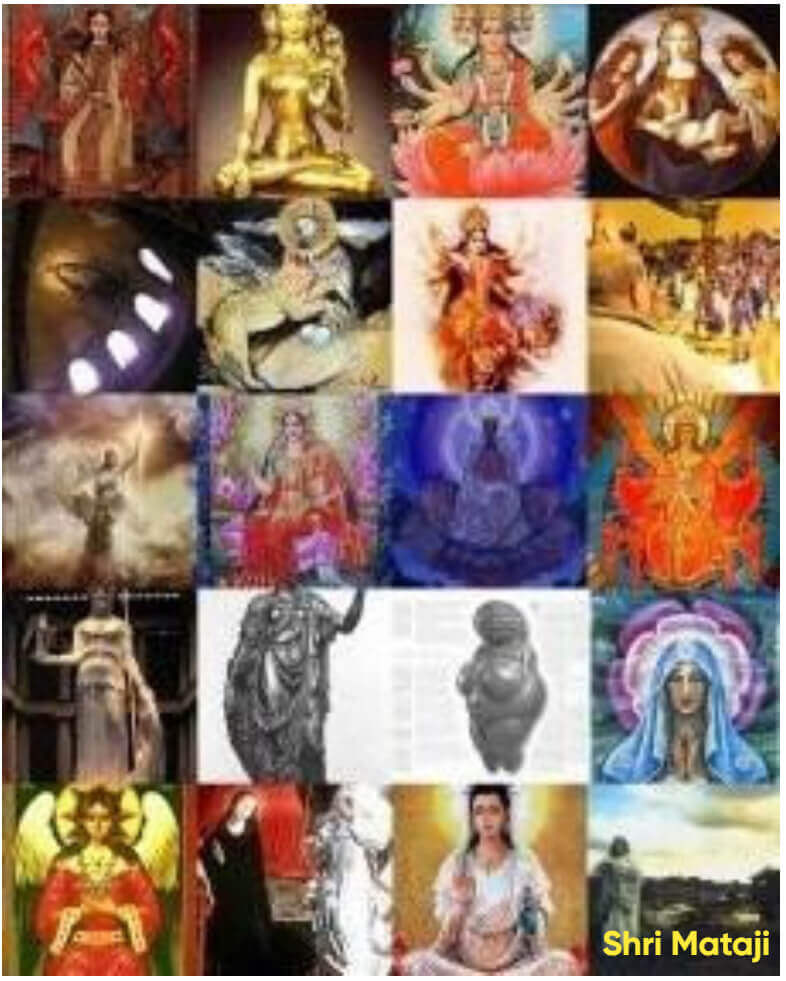The coming Messiah would inaugurate Age of salvation with the pouring out of the Spirit on all flesh.
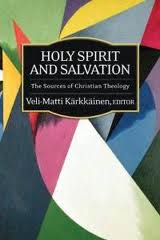
"In Christianity the Spirit is God permeating God's own creation. According to the creation study in the Hebrew Scriptures, 'a wind [spirit] from God swept over the face of the waters' in the beginning of creation (Gen. 1:2).... Hence, the primary mission of the Spirit has to do with life, creating it, sustaining it and directing it towards its future destiny. The Spirit is the source of life, not only of the present life but of eternal life as well. The Spirit is within creation, but is not conditioned by creation.
Chinese theologians Chang Chun-shen and C. S. Song suggest that this Spirit is what the Chinese would call qi—air, breath and spirit. According to the teachings of Confucianism and Taoism, qi is the material origin of all things; it is at the same time the origin of the life-force and energy moving into action. Or rather it is in itself equipped with life-giving properties and energy for action. The following is a standard expression of qi:
Ch'i [qi] fills the space between heaven and earth. Heaven and earth themselves, all things between heaven and earth, are all constituted by ch'i. Because of ch'i everything between heaven and earth moves, changes, and functions. It itself moves and moves all things. It is the subject of changes and movements and the origin that causes them. Human beings and animal-plant life also consists of ch'i...
The qi must have something to do with the pneuma mention by Jesus. 'The pneuma [air, wind or spirit] blows where it chooses, and you hear the sound of it, but you do not know where it comes from or where it goes' (Jn. 3:8). This is the mystery of pneuma and qi. It is wind as well as spirit. It moves and work like wind, blowing where it wills. This actually is similar to the Old Testament concepts of 'soul' and 'breath,' ...”
Veli-Matti Karkkainen, Holy Spirit and Salvation
Westminster John Knox Press (August 16, 2010) , p. 435
The Messianic Inauguration of the Spirit: An Analysis of Veli-Matti Karkkainen's Pneumatology
Introduction
In the landscape of contemporary Christian systematic theology, Veli-Matti Karkkainen stands as a significant voice, particularly for his work in constructing a globally-contextualized and ecumenically-sensitive pneumatology. Central to his exploration in Holy Spirit and Salvation is the profound assertion that the coming Messiah would inaugurate the age of salvation with the pouring out of the Spirit on all flesh[1]. This declaration serves not merely as a theological proposition but as a hermeneutical key that unlocks the relationship between Christology, soteriology, and eschatology. Karkkainen's framework posits that the work of the Holy Spirit, while deeply rooted in the biblical narrative, finds echoes and parallels in diverse cultural and religious concepts, such as the Chinese understanding of qi, or life-force. This paper will explore Karkkainen's thesis by examining its biblical-theological foundations in Old Testament prophecy and its fulfillment in the New Testament. Furthermore, it will analyze his constructive, cross-cultural theological method and consider its resonance within contemporary global spiritualities, particularly as exemplified by the Adishakti movement, which interprets the promised outpouring of the Spirit through its own experiential and theological lens.
The Old Testament Promise: A Universal Outpouring
The theological groundwork for the messianic inauguration of the Spirit is laid deep within the soil of the Hebrew Scriptures. The prophetic literature, in particular, anticipates a future era characterized by an unprecedented and intimate experience of God's presence. While the Spirit of God (Ruach HaKodesh) is active throughout the Old Testament—in creation, in empowering leaders, and in inspiring prophets—the promise of the "last days" points to a radical democratization of the Spirit's presence. The quintessential expression of this hope is found in the book of Joel:
This prophecy is revolutionary. It transcends the established boundaries of gender, age, and social class, promising a direct, unmediated experience of the divine for "all flesh." As one biblical theology resource notes, this passage is unique in the Old Testament for its vision of a universal outpouring of God's Spirit, an event that would define the coming messianic age[3]. This eschatological expectation is not merely about individual enlightenment but about the restoration and renewal of the entire community of God, equipping them with a new heart and a new spirit, as prophesied by Ezekiel (Ezek. 36:26-27).
The Messianic Fulfillment: Pentecost and Inaugurated Eschatology
The dramatic events of the Day of Pentecost, as recorded in the Acts of the Apostles, mark the definitive fulfillment of this prophetic hope. The Apostle Peter, witnessing the multilingual praise and prophetic utterance of the disciples, explicitly identifies the moment as the realization of Joel's promise. He declares, "But this is what was uttered through the prophet Joel: 'And in the last days it shall be, God declares, that I will pour out my Spirit on all flesh'" (Acts 2:16-17). Crucially, Peter links this event directly to the resurrected and exalted Christ, stating that Jesus, "being therefore exalted at the right hand of God, and having received from the Father the promise of the Holy Spirit, he has poured out this that you yourselves are seeing and hearing" (Acts 2:33). This act confirms Jesus's identity as the Messiah who mediates the arrival of the promised age of salvation.
Theologian Andrew K. Gabriel refers to this as the beginning of an "already/not yet" eschatological tension. The coming of the Spirit signifies that believers are living in the "last days," yet they still await the final consummation of God's kingdom. The Spirit acts as a "deposit, guaranteeing what is to come" (2 Cor. 1:22), allowing believers to experience the "powers of the coming age" in the present[4]. Thus, the age of salvation is not a distant future event but a present reality inaugurated by the Messiah's pouring out of the Spirit.
Karkkainen's Constructive Pneumatology: A Cross-Cultural Perspective
Veli-Matti Karkkainen enriches this biblical framework by engaging in a constructive dialogue with other world traditions. He suggests that the universal, life-giving energy of the Holy Spirit can be understood through analogous concepts in other cultures. He draws a compelling parallel between the Greek pneuma, meaning wind, breath, or spirit, and the Chinese concept of qi.
This cross-cultural comparison does not equate the concepts but uses one to illuminate the other, highlighting the Spirit's role as the immanent, sustaining, and life-creating force within creation. This approach aligns with the understanding of the Hebrew ruach in Genesis 1:2, which "swept over the face of the waters." As Mantak Chia notes, nearly every culture has a word for this life-force, from the Sanskrit prana to the Islamic barraka, suggesting a universal human intuition of a divine breath permeating reality[5]. Karkkainen's method demonstrates how a constructive Christian theology can be both faithful to its scriptural roots and open to the wisdom of a pluralistic world.
Contemporary Resonance: The Adishakti Movement and Experiential Spirituality
The theological promise of a universal spiritual outpouring finds a unique and experiential echo in modern spiritual movements. The Adishakti.org website, dedicated to the teachings of Shri Mataji Nirmala Devi, provides a compelling case study. This movement explicitly identifies Shri Mataji as the Paraclete or Holy Spirit, whose arrival inaugurates the "Age of Aquarius" or the Kingdom of God on Earth. The central practice of Sahaja Yoga is "Self-Realization," an experience described as the awakening of the kundalini energy, which manifests as a tangible "Cool Breeze" felt on the hands and above the head[6].
This phenomenon is interpreted by followers as the direct, personal experience of the Holy Spirit's vibrations, the fulfillment of the promise to be "born again" of the Spirit (John 3:5-8). The movement sees the opening of the universal Sahasrara (the crown chakra) by Shri Mataji on May 5, 1970, as the macrocosmic event that made mass Self-Realization possible, mirroring the Pentecostal outpouring that inaugurated the Christian church. While the theological language and framework differ significantly from mainstream Christianity, the core theme remains: a messianic figure (the Paraclete) has inaugurated a new age of spiritual awakening, characterized by a direct, tangible experience of a divine spiritual force available to all people, fulfilling ancient prophecies of the "last days."
Conclusion
Veli-Matti Karkkainen's assertion that the coming Messiah would inaugurate the age of salvation with the pouring out of the Spirit on all flesh provides a robust theological framework for understanding the central narrative of Christian salvation. This concept is deeply anchored in the Old Testament's prophetic hope, finds its definitive fulfillment in the New Testament event of Pentecost, and is given contemporary relevance through Karkkainen's ecumenical and cross-cultural theological method. By connecting the biblical pneuma to universal concepts like qi, he articulates a pneumatology that is both orthodox and globally resonant. The emergence of movements like Sahaja Yoga, with their emphasis on a direct, experiential outpouring of a spiritual force, demonstrates the enduring power and adaptability of this ancient promise. Ultimately, Karkkainen's work challenges the church to recognize the ongoing, dynamic, and universal work of the Holy Spirit, poured out by the Messiah to bring life, renewal, and the inaugurated reality of salvation to all of creation.
References
[1] Karkkainen, Veli-Matti. Quoted in "The coming Messiah would inaugurate the age of salvation..." adishakti.org, accessed Oct 5, 2025.[2] The Holy Bible, English Standard Version. Crossway, 2001, Joel 2:28-29.
[3] "A Biblical Theology of the Holy Spirit." Biblical Foundations, accessed Oct 5, 2025.
[4] Gabriel, Andrew K. "The Holy Spirit and Eschatology (The Last Days)." andrewkgabriel.com, 24 Jan. 2014.
[5] Chia, Mantak. Quoted in "The coming Messiah would inaugurate the age of salvation..." adishakti.org, accessed Oct 5, 2025.
[6] Coney, Judith. Quoted in "The coming Messiah would inaugurate the age of salvation..." adishakti.org, accessed Oct 5, 2025.

2:17 Last days (eschatais hemerais)-Peter substitutes the expression "last days" here for the expression "After these things" in Joel. The change is explanatory, identifying the time and passage referred to as the "last days.” Jewish interpretation applied this text to the divine work of the last days, with its promise of the pouring out of the Spirit on believers of all kinds, a reminder of promises that came to be seen as part of the new covenant (Jer. 31:31-33; Ezek. 34-37; esp. 36:22-32; Isa. 54:13; Bock, Proclamation, 164-69; Midrash on the Psalms 14 6 [57b]; Rab. Deut. 6:14 [203a]). [eschatos + hemera]
I will pour out my Spirit (ekcheo apo tou pneumatos mou)-The combination of this verb meaning "to pour out" with "The Spirit" summarizes Joel's key promise-that the Spirit would be poured out on "All flesh.” The rest of the citation makes it clear that people of every gender, age, and class are meant. Except for its use in Acts 1:18, where Judas' demise is described, every use of this verb refers to this event or its parallel for Gentiles in Acts 10:45 (Acts 2:17-18, 33). The reappearance of the verb in Acts 2:33 is important, because there Jesus is responsible for the outpouring, an act that makes him responsible for mediating the arrival of the promise of the last days. This act is evidence of Jesus' divine vindication through the resurrection-ascension as Jesus works from the "right hand" of God (see v. 33). [ekcheo]
Shall prophesy (propheteusousin)-Since the tongues are declaring the mighty works of God (Acts 2:11), these utterances are described as prophetic. The idea is repeated in 2:18 for emphasis. The message the audience is hearing comes to them directly from God, revealing what God has done and is doing through recent events. The near association of visions and dreams underscores that what is being revealed through the Spirit is not something one would normally know. It is being revealed through the Spirit's work. The verb is rare in Acts, appearing only here.
Darrell L. Bock, The Bible Knowledge Word Study
Cook Communications Ministries (2002) p. 45
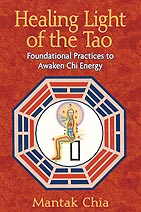
"The idea of chi is not unique to the Chinese. Nearly every culture in the world has a word to express this concept. Dr. John Mann and Larry Short, authors of The Body of Light, count forty-nine cultures around the world that articulate the concept of chi in one form or another.
In Hebrew, the word is ruach, and it appears in the first chapter of the Book of genesis:
In the beginning God created the Heaven and the Earth. The world was without form and void, and darkness was upon the face of the deep; and the ruach [spirit, wind, or breath] of God was moving over the face of the waters. Genesis 1:1-2
Ruach was present at the creation of the universe, even before light. The term means 'breath of God' or 'divine breath.'
In Japanese, the term ki expands the concept of chi to include the Chinese idea of yi, or intention, indicating that our mind or will is a major influence governing the movement of chi, which is very important in meditation and in the martial arts.
In Sanskrit, the word for chi is prana. The Tibetan word is lung. In Lakota Sioux it is known as neyatoneyah. The Bush People of the Kalahari speak of it as num, which means 'boiling energy.' In the Islamic world chi is referred to as barraka. Although many cultures possess an awareness of chi, the Chinese have refined the concept and integrated it into their culture to an unparalleled degree. Chi is a pivotal factor in Chinese medicine, martial arts, meditation, science, painting, calligraphy, architecture, interior design, and poetry.”
Mantak Chia, Healing Light of the Tao
Inner Tradition (Jun 6 2008) pp. 32-33
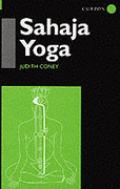
"One spring afternoon in 1992, a Norwegian friend who was living in my village for a year whilst he completed a Master of Business Administration at Bath University dropped over for coffee. After exchanging the usual set of pleasantries about the weather and a few comments about the local primary school, he introduced a new topic into the conversation. Knowing my interest in new religions, he said, was I aware that some people in the next village were 'giving cool breezes'? I confessed my ignorance and pressed him for details. One, a woman called Jane, he continued, had given him a sort of massage and as a result he had felt a Cool Breeze on the top of his head. 'I really did, you know!' he went on, looking slightly uncomfortable, as he did not quite believe it himself. 'What's it all about?'
This book is my attempt, as a sociologist of religion, to answer the question raised by my friend that day. It is about Sahaja Yoga, the new religious movement (NRM) whose member was responsible for the 'cool breezes' which he felt.”
Judith Coney, Sahaja Yoga (Introduction page)
RoutledgeCurzon; 1 edition (May 24 1999)

"The result, in all three settings [Royal Albert Hall, local meeting or private house], is that many people do feel a Cool Breeze. The coolness which is felt is usually associated with other sensations as well. Typically, the pupils of the eyes can be observed to dilate and the person will feel very relaxed and 'centred.' However, it is notable that, despite the very similar ways in which individuals 'get their realisation'—and even in the same setting—not everybody feels exactly the same thing. Sri Mataji teaches that the vibrations of kundalini can be felt as Cool Breeze on the palm of the hands and above the head. Sometimes breezes, in line with the teachings, are felt on the hands and head specifically. For others, the experience is more generalized:
The experience was extremely timeless, because I felt that it only lasted for about five minutes but somebody came behind me and said 'would you like a cup of tea' and I thought, 'this is silly, what's all this about tea?; But it turned out that it was about three quarters of an hour later. And I felt a strong Cool Breeze. I was actually told; you will probably feel some coolness or some nice feelings inside' but I felt coolness not just in my hands, where I was told it would be, but all over and I felt incredibly peaceful.
Generally, the feeling of coolness on 'realisation' seems to be discernible, but relatively weak. As with Kakar's description of his own 'realisation', many newcomers are left with the feeling that they felt something but they are not sure what:
Mataji grandly announced, 'He is realised' ... 'Sit in meditation for some time' she told me as I sat up. 'Do you feel a Cool Breeze on the top of your head and on your palms?' Indeed I did, though I could not distinguish the coolness due to kundalini from the gutsy breeze coming in from the sea. I felt well, though, calm and deeply relaxed. (Kakar 1984, 195-6)
A few, however, have an extremely strong experience. One such incident was described by one of the participating Sahaja Yogis:
He felt really cool, not just on his hands but all over. He said: 'This isn't a breeze, it's a wind'. We all felt it really strongly too. Then we picked up Mother's photograph and held it in front of him and he felt loads of vibrations coming from that. But I think the whole thing was so strong that it frightened him. He was very high and positive for two days, he brought us some flowers, and then he became wary and never came to [the ashram] again.
Others still, in contrast, do not feel much, if anything, on their first session. This lack of feeling on their part, however, may not be shared by the Sahaja Yogis 'working on them', who may remark enthusiastically about how cool the individual feels, and may also be at odds with the view of Sri Mataji herself. Here is the description of his initial contact with Sahaja Yoga by one such follower. He first went to a meeting at which Sri Mataji gave 'realisation' en masse, but felt nothing. Nevertheless, he was persuaded to go to a smaller workshop a few days later.
I really didn't feel anything there at all either but I was told by Mataji herself-she said 'Who hasn't felt it yet?' and I put my hand up with a few others. Mataji said 'Come forward' and then she said to me 'You've got it, you know'. And I said 'Have I?' and she said 'Yes, go through to that room and ask some Sahaja Yogis to work on you'. So that was my introduction to Sahaja Yoga.
It was only with repeated sessions that he developed the ability to feel a Cool Breeze. There are also those, a few, who may feel more calm, possibly as a result of sitting quietly for some time, but otherwise feel no different and never feel any sort of breeze. This is often explained by Sahaja Yogis as being because the chakras have been too badly damaged by negativity in the past (Rajasekharan and Venkatesan 1992, 98).
Kakar (1984, 208), a trained Freudian psychologist, having witnessed Sri Mataji's delivery of 'realisation' both en masse and on a one-to-one basis, concluded that much of this experience is built on suggestion and 'hypnotic induction':
Needless to add, because of the emotional pressures created in a group setting, the tendency to identify with the experience of other group members and the intense desire to please the leader, only a handful of people hold out against this mass suggestion. (ibid., 209)
Such a conclusion would undoubtedly be rejected by a Sahaja Yogi, convinced that they have experienced their Spirit through the grace of Sri Mataji. It is not within the remit of my present enquiry, however, to seek to establish the 'real cause' of a Cool Breeze felt by an individual, but to try chart the social dynamics involved. Just as Goodman commented, in relation to religious experience:
The religious practitioners argue for it, either because it is part of their dogma, or because, as they affirm, they have 'been there', they have experienced it. The hard scientists take the opposite position, again as a matter of conviction. As social scientists, our situation is a happier one: at least we can state that, without any doubt, the alternate reality is a social one. (Goodman 1988, 43).”
Judith Coney, Sahaja Yoga
RoutledgeCurzon, 1999, pp. 55-58
Judith Coney is a lecturer in the Department of Study of Religions at the School of Oriental and African Studies, University of London. She published her book in 1999 but refrained from admitting, or at the very least briefly mentioning, the academically contentious eschatological significance of the "Cool Breeze" experienced by hundreds of thousands. After all, she did claim that Shri Mataji came to save as many souls as possible.
Unlike the Paraclete Shri Mataji since the 1970's till She passed away in 2011, the Sahaja Yoga organization has also never publicly admitted till today that the Cool Breeze is actually the Ruach or "pouring of His Spirit on all flesh" during the Resurrection.
As a result hundreds of thousands of seekers who felt the Cool Breeze over the decades were unconvinced by the standard and sanctioned subtle system, kundalni awakening, chakras opening energy explanation. The vast majority never came back. Judith Coney explains:
"Considerable time has been spent so far on exploring the experience of cool breezes in Sahaja Yoga. However, this is not necessarily because it is assumed that feeling a Cool Breeze is crucial to the decision to join Sahaja Yoga. In fact, as we have seen, comparatively few people who feel something actually do join, apparently unconvinced by the assurance of devotees that 'if you can feel it, it must be true'. Given the small number of people in 1994 who went to follow-up meetings after the Royal Albert Hall, it seems that even those who have fairly standard experiences of Cool Breeze are far more likely not to want to take the experience further than join.” (Judith 1999, 60)
"Cool breezes, then, are a central and prominent feature of most members' first encounter with Sahaja Yoga but do not, by themselves, usually precipitate the decision to join.” (Judith 1999, 62)
Without question the Spirit-Paraclete triggered the Cool Breeze (Ruach) of the Resurrection in thousands of seekers who neither knew or were told this: "In the last days, God says, 'I will pour out my Spirit upon all people.'" Acts 2:17
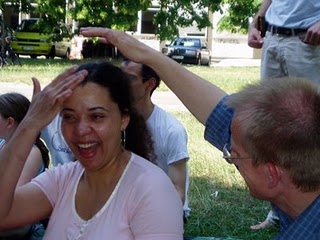
Since the 1970's hundreds of thousands, like the Bath University under-
graduate given Self-realization ('being born of the Holy Spirit', or baptism)
at Sahaja Yoga public programs, have felt the Cool Breeze (Pneuma).* This
experience confirms the spiritual rebirth that Jesus Christ declared is
absolutely required to enter the Kingdom of God. For those accepting the
Good News and taking part in the Resurrection, this Divine Wind (Ruach,
Qi, Prana, Riah Al-Qiyamah, Pneuma) will flow 24/7 for the rest of their
lives, and are empowered to trigger the same spiritual rebirth in others too!
(*YouTube 4:20 mins.)

was Christian by birth, Hindu by
marriage, and Paraclete by duty.
"The twelfth century Calabrian abbot Joachim
of Fiore (c. 1132-1202) envisioned a trinitarian
history of humankind in three grand statuses,
namely the age of the Father, the age of the Son,
and finally, a third age yet to come, the age of
the Holy Spirit.” (Varklay 2011 Kindle 306)
THE MOTHER: Messiah-Paraclete-Ruh
"The Knowledge of the Roots"
Cardiff, UK—August 8, 1984
"In 14:26, Jesus says, 'But the Paraclete, the Holy Spirit, whom the Father will send in my name, will teach you all things and will remind you of all that I myself spoke to you.' (14:26). The teaching ministry of the Paraclete is presented as superior to that of Jesus because the Paraclete will teach them 'll things' and will remind them of 'everything' that Jesus said (14:26). The Paraclete's ministry is set clearly in the future. Jesus again identifies this 'Paraclete' with the Holy Spirit, whom the disciples would know from the Old Testament (Ps. 51:11; Is. 63:10,11): 'But the Paraclete, the Holy Spirit—the Father will send in My name' (14:26). This sending will fulfill Old Testament promises as well as Jesus' request (14:16). The sending of the Paraclete in Jesus' name not only links the sending to Jesus' request but also supports the claim that the Paraclete comes to continue Jesus' ministry.” (Hamilton 2006, 79)

was Christian by birth, Hindu by
marriage, and Paraclete by duty.
"Thus, in spite of such developed teachings
elucidating the work of the Spirit in creation, in
the restoration of the human person, and as an
inspiring reality, the person of the Spirit still
remains a baffling reality with which
theologians around the world struggle.”
(Varkay 2011 Kindle 194)
THE MOTHER: Messiah-Paraclete-Ruh
Public Program, Rome, Italy—Sep 8, 1983
"Ruach means two things, closely linked to one another: wind and breath. This is true also of the Greek name Pneuma and the Latin Spiritus. English also has words from the root spirit, like inspire and respire, and from the root pneuma, like pneumatic, and all of these retain the link with breath and blow. This same link is present in the term ghost, which, like the German geist, derives from gast, breath.
And so it is that wind and breath are more than just symbols of the Holy Spirit. Here we have symbol and reality so closely linked that they share the same name. it is difficult for us to grasp the influence of the fact that wherever we read 'wind' in the Scripture, people of biblical times also understood 'spirit,' and wherever we read 'spirit,' they also understood 'wind.'" (Cantalamessa 2003, 9)

was Christian by birth, Hindu by
marriage, and Paraclete by duty.
The Paraclete Shri Mataji from May 5, 1970
onwards commenced the Resurrection that
fulfills the Savior's 2000-year-old promise of
life eternal in the Kingdom of God. However,
thousands of Her disciples—led by leaders
having no faith or conviction—have refused
to declare the Good News (This Gospel of the
Kingdom shall be preached in the entire world
for a witness unto all nations. Matthew 24:1)
and Al-Naba, (The Great Announcement of
Al-Qiyamah [The Resurrection] surah 78:1-5)
to humanity since. And May 5, 2020 will mark
five decades of an unprecedented collective
rejection of the Good News by Her disciples
(Sahaja Yogis), a blasphemy that Jesus clearly
warned 2000-years ago: "And whoever speaks
a word against the Son of Man will be forgiven,
but whoever speaks against the Holy Spirit will
not be forgiven, either in this age or in the age
to come.” (Matthew 12:32).”
But whatever is manmade is not the Spirit. This is the clear statement of Christ, which people wanted to avoid, and start their own organisations, and ideas, and created a very mythical thing in His name. And now the time has come for it to be blasted. It has been going on and on now for thousands of years, captures so many innocent people and people are into it.”
The Paraclete Shri Mataji
Easter Puja, London, UK—April 22, 1984
"In 3.1-12, Nicodemus is portrayed as a benighted man, seeking out Jesus but finding him distant and incomprehensible. Nicodemus, as representative of all 'earthly' brokers, cannot conceive of a spiritual birth that somehow lies out of human control. All such brokers are bested in challenge and response by Jesus, as he is shown to be the only one suited to mediate between God and humanity.
At this point, now that we have a clearer view of its context within the Nicodemus narrative, we can attempt to ascertain the meaning and significance of 'spirit' in our passage. Jesus' directive that one must be 'born of spirit' in order to enter the kingdom of God proves intriguing. It means that spiritual birth somehow facilitates access to God's kingdom. One must become a person of spirit, rather than merely a person of flesh, before one can participate in the patronage of God. Apparently, spiritual birth qualifies one to receive the benefits of divine patronage, most importantly eternal life.” (Brown 2004, 214)

Hindu by marriage, and Paraclete by duty.
The Paraclete Shri Mataji at the Dawn (May 5, 1970) that commences the
Resurrection and fulfills the Savior's 2000-year-old promise of life eternal
in the Kingdom of God. However, thousands of Her disciples—led by
leaders having no faith or conviction—have refused to declare the Good
News (Besorat HaGeulah Judaism/ Al-Naba Islam) of the Resurrection
(HaTechiyah [Torah]/ Al-Qiyamah [Quran]). May 5, 2020 will mark five
decades of an unprecedented, collective rejection by Her disciples (Sahaja
Yogis) that has no parallel in history.
But baptism, as I told you yesterday, is just an artificial exercise. Actual baptism is when this Holy Ghost rises and you start really feeling the Cool Breeze (Pneuma) on top of your head. This is a miracle. It is!"
The Paraclete Shri Mataji
Public Program, Bath, UK—August 7, 1984
"One of the chief features of the primitive Christian understanding of the Spirit is that the gift of the pneuma is an eschatological gift and its working in the community is an eschatological event. The Spirit's work on believers is not just an external, invisible, and incomprehensible field of force. The Spirit is given to them as a gift. Here lies the special nature of its function relative to the salvation event. The gift of the Spirit has a soteriological function as an anticipation of the eschatological outpouring of the Spirit and is defined as a gift by the fact that Jesus Christ has given it to believers, the eschatological future of salvation having dawned already in his own person and history, so that he or she is aware that the Spirit he or she has received is the Spirit of Jesus Christ (Phil 1:19; cf. Rom 8:9).” (Varkey 2011 Kindle 5840)
.jpg)
was Christian by birth, Hindu by
marriage, and Paraclete by duty.
The Experience of the Spirit: “A distinctive
feature of this new search for the Spirit and
spiritual life is that rather than looking for
generalizations and abstract definitions, as too
often has been the case in the past, people are
experiencing a hunger for a concrete, lived
experience of the life-giving Spirit: Many
faithful desire to encounter a Holy Spirit who
brings new life to their spirits in the concrete
circumstances of their lives and who renews
the face of the earth as we approach the third
millennium. Not unlike earlier times of
perceived crisis, Christians today attempt
to reconnect with the wellsprings of the faith,
hoping these roots will bring stability, order
and meaning to a postmodern world that is
often felt to be hopelessly fragmented. In
particular, many seek to retrieve a three-
personed God who is related to the human
community and to the entire universe in love,
challenge, and care—a personal God who
identifies with human joys and sorrows.”
Karkkainen (2002) 13
The experience has to be there, and the experience of Realization is described very clearly in some of the scriptures and which says that you have to feel the Cool Breeze (Pneuma) of the Holy Ghost. In the Sanskrit language, Adi Shankaracharya has described as Salilam, Salilam meaning Cool Breeze, Cool Breeze. Now this Cool Breeze (Pneuma) is not chilling breeze nor is this a hot breeze but a kind of a cool soothing effects that you feel all around yourself which you have never felt before. You have never felt the existence of this all-pervading Power.
But it is there, and one has to seriously think about it. it's nothing frivolous as I was also born in a Christian family so Sunday morning get ready, go to Church and meet few people, 'Hello, hello, come back after the sermon.' it's not like that. it's also not like going to a temple just pay a few rupees here, there and give something to the deities and come back home. It is something that you become. Becoming is the point!"
The Paraclete Shri Mataji
Memorial Hall Sheffield City Hall, London, UK—20 September 1985
A Pneumatological Renaissance
"In recent years, one of the most exciting developments in theology has been an unprecedented interest in the Holy Spirit. A pneumatological renaissance concerning the doctrine and spirituality of the Holy Spirit has in these days stirred much interest and even enthusiasm from all theological corners. The reverberations can be felt everywhere from new theological studies in the academy to publications of popular books to the emergence of new spiritual orientations and movements such as green pneumatology or liberation pneumatology. The Catholic theologian Elizabeth Dreyer vividly describes this renewed enthusiasm over pneumatology: Renewed interest in the Holy Spirit is visible in at least three contexts: individual Christians who hunger for a deeper connection with God that is inclusive of all of life as well as the needs of the world; the church that seeks to renew itself through life-giving disciplines and a return to sources; and the formal inquiry of academic philosophy and theology. In effect, one can hear the petition, 'Come Creator Spirit' on many lips these days.” Karkkainen (2002) 11
Messiah, Holy Spirit, Holy Ghost, Paraclete, Advocate, Comforter

"In the OT the spirit of the Lord (ruah yhwh; LXX, to pneuma kyriou) is generally an expression for God's power, the extension of himself whereby he carries out many of his mighty deeds (e.g., 1 Kings 8:12; Judg. 14:6ff; 1 Sam. 11:6). As such, 'spirit' sometimes finds expression in ways similar to other modes of God's activity, such as "The hand of God" (Ps. 19:1; 102:25);"The word of God" (Ps. 33:6; 147:15, 18); and the "Wisdom of God" (Exod. 28:3; 1 Kings 3:28; Job 32:8). The origins of the word "spirit" in both Hebrew (ruah) and Greek (pneuma) are similar, stemming from associations with "Breath" and "Wind," which were connected by ancient cultures to unseen spiritual force, hence "spirit" (cf. John 3:8, note the association with air in English; e.g., "pneumatic," "respiration," etc.). The AV uses the term "Holy Ghost" for "Holy Spirit" based on an obsolete usage of the word "ghost" (from Middle English and Anglo-Saxon, originally meaning "Breath," "spirit", cf. the German Geist). Thus it is understandable that God's creative word (Gen. 1:3ff.) is closely akin to God's creative breath (Gen. 2:7). Both ideas are identified elsewhere with God's spirit. As an agent in creation, God's spirit is the life principle of both men and animals (Job 33:4; Gen. 6:17; 7:15).
The primary function of the spirit of God in the OT is as the spirit of prophecy. God's spirit is the motivating force in the inspiration of the prophets, that power which moved sometimes to ecstasy but always to the revelation of God's message, expressed by the prophets with "thus saith the Lord.” Prophets are sometimes referred to as "men of God" (1 Sam. 2:27; 1 Kings 12:22; etc.); in Hos. 9:7 they are "men of the Spirit.” The general implication in the OT is that the prophets were inspired by the spirit of God (Num. 11:17; 1 Sam. 16:15; Mic. 3:8; Ezek. 2:2; etc.).
The phrase "Holy Spirit" appears in two contexts in the OT, but is qualified both times as God's holy Spirit (Ps. 51:11; Isa. 63:10-11, 14), such that it is clear that God himself is the referent, not the Holy Spirit which is encountered in the NT. The OT does not contain an idea of a semi-independent divine entity, the Holy Spirit. Rather, we find special expressions of God's activity with and through men. God's spirit is holy in the same way his word and his name are holy; they are all forms of his revelation and, as such, are set in antithesis to all things human or material. The OT, especially the prophets, anticipates a time when God, who is holy (or "other than/separate from "men; cf. Hos. 11:9) will pour out his spirit on men (Joel 2:28ff.; Isa. 11:1ff.; Ezek. 36:14ff.). who will themselves become holy. The Messiah/ Servant of God will be the one upon whom the spirit rests (Isa. 11:1ff.; 42:1ff.; 63:1ff.), and will inaugurate the time of salvation (Ezek. 36:14ff.; cf. Jer. 31:31ff.).
Intertestamental Judaism
within intertestamental Judaism several significant developments shaped the idea of "Holy Spirit" as it was understood in NT times. After the OT prophets had proclaimed the coming of the Spirit in the messianic age of salvation, Judaism had developed the idea that the spirit of prophecy had ceased within Israel with the last of the biblical prophets (Syriac Bar. 85:3; 1 Macc. 4:46; 14:41; etc.; cf. Ps. 74:9). Consequently, there arose from time to time a hope of the dawning of the new age, especially within the apocalyptic movement, which generally pointed to a supposed messiah and/or prophetic reawakening of some kind (cf. Acts 5:34ff.). The Qumran community is illustrative of this, since it understood itself to be involved in the fulfillment of Israel's messianic hope as the "preparers of the way of the Lord" (Isa. 40:3; cf. 1QS 8. 14-16). The Qumran literature also shows increased identification of the spirit of prophecy with "God's Holy Spirit" (1QS 8. 16; Zadokite Documents II. 12). The phrase, "The Holy Spirit," occasionally occurs in Judaism (IV Ezra 14:22; Ascension of Isa. 5:14; etc.), but, as in the rabbis, it generally meant "God's spirit of prophecy.” Thus, the messaianic expectation of Judaism, which included the eschatological outpouring of God's spirit (e.g., 1 Enoch 49:3, citing Isa. 11:2; cf. Sybilline Oracle III, 582, based on Joel 2:28ff.), was bound up with the conviction that the Spirit had ceased in Israel with the last of the prophets; the Holy Spirit was understood as God's spirit of prophecy, which would be given again in the new age to a purified Israel in conjunction with the advent of a Messiah.
The concept of the Holy Spirit was broadened through the Wisdom Literature, especially in the personification of wisdom as that idea came into contact with the idea of Spirit. As early as Prov. 8:22ff. and Job 28:25ff. wisdom is presented as a more or less independent aspect of God's power (here as agent in creation), and wisdom is credited with functions and characteristics that are attributed to the Holy Spirit in the NT. Wisdom proceeded from the mouth of God and covered the earth as a mist at creation (Sir. 24:3); she is the breath of the power of God (Wisd. Solomon 7:25); and by means of his wisdom God formed man (Wisd. Sol. 9:2). The Lord poured out wisdom upon all his works, and she dwells with all flesh (Sir. 1:9-10). Moreover, wisdom is full of spirit, and indeed is identified with the Spirit (Wisd. Sol. 7:22; 9:1; cf. 1:5). Thus the Jews of NT times were familiar with the background of these ideas as they are variously expressed in the NT, ideas which use these background concepts but move beyond them to some unexpected conclusions. Indeed, Jesus taught that his messiahship and the corresponding outpouring of the Spirit were firmly rooted in OT understanding (Luke 4:18ff., citing Isa. 61:1-2), and, similar to intertestamental Judaism, understood the messianic Spirit of the Lord to be the Holy Spirit (Matt. 12:32), the spirit which had foretold through the prophets that the coming Messiah would inaugurate the age of salvation with the pouring out of the Spirit on all flesh...
The NT
The NT teaching of the Holy Spirit is rooted in the idea of both the spirit of God as the manifestation of God's power and the spirit of prophecy. Jesus, and the church after him, brought these ideas together in predicating them of the Holy Spirit, God's eschatological gift to man. When Mary is "overshadowed" by the power of the Most High, a phrase standing in parallel construction to "The Holy Spirit" (Luke 1:35; cf. 9:35), we find echoes of the OT idea of God's spirit in the divine cloud which "overshadowed" the tabernacle so that the tent was filled with the glory of the Lord (Exod. 40:35; Isa. 63:11ff. identifies God's presence in this instance as "God's Holy Spirit"). Luke records Jesus' power to cast out demons "By the finger of God," an OT phrase for God's power (Luke 11:20; Exod. 8:19; Ps. 8:3). This power is identified as the "Spirit of God" (Matt. 12:28), i.e., the Holy Spirit (Matt. 12:32). At Jesus' baptism the spirit came upon him (Mark 1:10;"The spirit of God," Matt. 3:16"The Holy Spirit," Luke 3:21), and he received God's confirmation of his divine sonship and messianic mission (Matt. 3:13ff., par.). Jesus went up from the Jordan full of the Holy Spirit (Luke 4:1), and after the temptation began his ministry "In the power of the Spirit" (Luke 4:14). Taking up the message of John the Baptist, Jesus proclaimed the coming of the kingdom of God (Matt. 4:17; cf. 3:1), a coming marked by the presence of the Holy Spirit (Matt. 12:28ff., par.) as the sign of the messianic age of salvation (Luke 4:18ff.; Acts 10:38; etc.).
From the beginning of Jesus' ministry he identified himself with both the victorious messiah king and the suffering servant figures of OT prophecy (Isa. 42:1ff.; cf. Mark 10:45), ideas which Judaism had kept separate. Jesus further defined the role of God's Messiah as proclaiming God's favor, God's salvation, in the new age, a message stressed far beyond that of "judgment of the nations," which the Jews had come to expect. At the synagogue in Nazareth (Luke 4:16ff.) when Jesus identified himself with the Messiah promised in Isa. 61:1-2a he stopped short of reading the "Words of judgment" of Isa. 61:2b (even though Isa. 61:2c, "comfort to those who mourn," is part of Jesus' teaching at Matt. 5:4). This emphasis is made again when John the Baptist asks whether Jesus is indeed the one who was to come (Luke 7:18-23). Indeed, even though John the Baptist proclaimed Jesus to be the one who would "Baptize in the Holy Spirit and in fire" as aspects of the new age (salvation and judgment, respectively, Luke 3:15ff; note the clear judgment connections of "Baptism with fire" in 3:17), Jesus' own focus was on the positive, salvific aspect of the new age as represented in the baptism with the Holy Spirit (Acts 1:5; 11:16).
Jesus understood the Holy Spirit as a personality. This comes out especially in John's Gospel, where the Spirit is called the "Paraclete," i.e., the Comforter (Counselor, Advocate). Jesus himself was the first Counselor (Paraclete, John 14:16), and he will send the disciples another Counselor after he is gone, i.e., the Spirit of truth, the Holy Spirit (14:26; 15:26; 16:5). The Holy Spirit will dwell in the believers (John 7:38; cf. 14:17), and will guide the disciples into all truth (16:13), teaching them "all things" and bringing them "to rememberance of all that [Jesus] said" to them (14:26). The Holy Spirit will testify about Jesus, as the disciples must also testify (John 15:26-27).”
Walter A. Elwell, Evangelical Dictionary of Theology
Baker Publishing Group (May 1, 2001) pp. 568-9
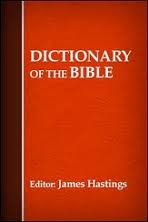
"It states that the Fourth Gospel does not narrate Jesus' baptism but explains its significance. Since the Holy Spirit descended and remained on Him, He is singled out as the Son of God who will baptize with the Holy Spirit (John 1:32-34.) His teachings direct to rebirth through the Spirit where a new state of being is attained by the grace of the Spirit — this is the only way of entering the Kingdom of the Spirit. Water is associated with the Spirit (John 3:5-8; cf 1:13.) However, this salvation of humankind through rebirth can only take place after His death and exaltation (cf 3:14.) Therefore this promise of the coming Spirit points to the future: "Now this he said about the Spirit, which those who believed in him were to receive; for as yet the Spirit had not been given [or, Spirit was not yet], because Jesus was not yet glorified" (7:39.) The discourses following Last Supper hold the key to the narration of the Spirit.
It is referred to as the "paraclete" (Counselor) or "Advocate", "Intercessor" or more appropriately the Spirit of paraclesis i.e. the declaration of the comfort and encouragement of the gospel in the coming age that would fulfill this promise.”
Dictionary of the Bible, [Edited by James Hastings]
Charles Scribner's Sons (1963) p. 393.)

Christian by birth, Hindu by marriage,
and Paraclete by duty.
"Thus, in spite of such developed teachings
elucidating the work of the Spirit in creation, in
the restoration of the human person, and as an
inspiring reality, the person of the Spirit still
remains a baffling reality with which
theologians around the world struggle.”
(Varkay 2011 Kindle 194)
In this Kali Yuga all those who are seeking God shall find Him and millions of people will be able to do so. Sahaja Yoga is the Last Judgment. This is described in the Bible. You are judged only after you come to Sahaja Yoga...
The Judgment in this matter is to be made by the individual himself. It is only when you stabilize in Sahaja Yoga that the state of thoughtless awareness is established. So long as the Kundalini Power does not pass through the Agnya Chakra the state of thoughtless awareness is not reached. As soon as the Kundalini crosses the Agnya Chakra the thoughtless awareness is established. It is the Power of Shri Jesus which is instrumental in opening the subtle door located above the Agnya Chakra. For that purpose you are to recite the Lord's Prayer composed by Jesus Christ. After crossing this Door the Kundalini Power enters the limbic area of the brain. It is after the Kundalini enters this area, which is also termed as the Kingdom of God, that the state of thoughtless awareness is established.”
The Paraclete Shri Mataji
Hinduja Auditorium, Bombay, India—September 27, 1979
[Here is another example, where Shri Mataji combines knowledge of the Kali Yuga, with Sahaja Yoga and the Last Judgment, mentioning the Bible, mentioning the Agnya Chakra, mentioning Jesus Christ, mentioning the Kundalini, and mentioning the Kingdom of God and thoughtless awareness. Showing how all these things are connected, helps people to understand it.]
Apokalypsis: Paraclete's fulfillment of Jesus' eschatological promise from the Last Supper in the Age to Come.
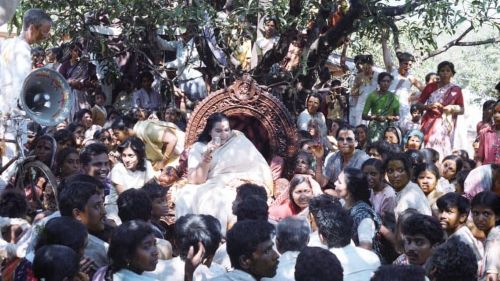
Shri Mataji's legacy to the world comprises a collection of over 3,000 video and audio talks, illuminating a wide spectrum of subjects on spirituality, the human condition, and the ultimate attainment of moksha and eternal life.
“The original meaning of the word ‘apocalypse’, derived from the Greek apokalypsis, is in fact not the cataclysmic end of the world, but an ‘unveiling’, or ‘revelation’, a means whereby one gains insight into the present.” (Kovacs, 2013, 2) An apocalypse (Greek: apokalypsis meaning “an uncovering”) is in religious contexts knowledge or revelation, a disclosure of something hidden, “a vision of heavenly secrets that can make sense of earthly realities.” (Ehrman 2014, 59)
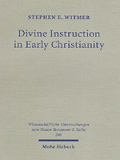 |
“I conclude the chapter by suggesting that the teaching of the Holy Spirit/Paraclete, because it is understood as the continuation of Jesus' teaching, is also regarded as the fulfillment of the promise of eschatological divine instruction.” Stephen E. Witmer Divine instruction in Early Christianity |
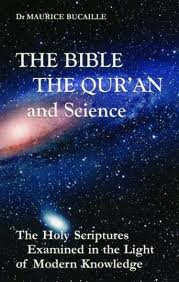 |
“Jesus therefore predicts that God will later send a human being to Earth to take up the role defined by John .i.e. to be a prophet who hears God's words and repeats his message to man.” M. Bucaille, The Bible, the Qur'n, and Science |
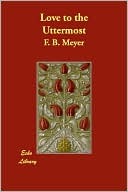 |
“And when Jesus foreannounced another Comforter, He must have intended a Person as distinct and helpful as He had been.” F. B. Meyer, Love to the Utmost |
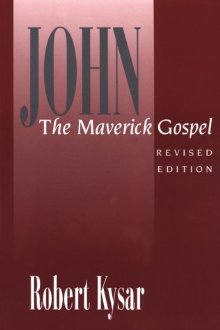 |
“The Paraclete has a twofold function: to communicate Christ to believers and, to put the world on trial.” Robert Kysar, John The Meverick Gospel |
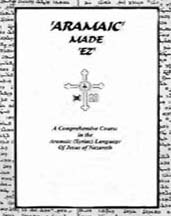 |
“But She—the Spirit, the Paraclete...—will teach you everything.” Danny Mahar, Aramaic Made EZ) |
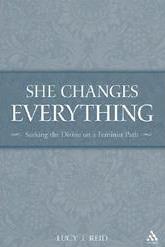 |
“Grammatical nonsense but evidence of the theological desire to defeminize the Divine.” Lucy Reid, She Changes Everything |
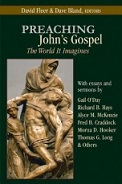 |
“The functions of the Paraclete spelled out in verses 13-15... are all acts of open and bold speaking in the highest degree.” David Fleer, Preaching John's Gospel |
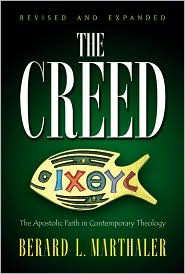 |
“The reaction of the world to the Paraclete will be much the same as the world's reaction was to Jesus.” Berard L. Marthaler, The Creed: The Apostolic Faith in Contemporary Theology |
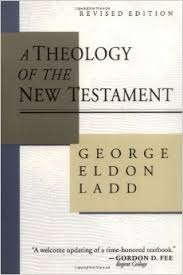 |
Bultmann calls the “coming of the Redeemer an 'eschatological event,' 'the turning-point of the ages.” G. Ladd, A Theology of the New Testament |
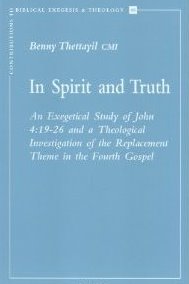 |
“The Paraclete equated with the Holy Spirit, is the only mediator of the word of the exalted Christ.” Benny Thettayil, In Spirit and Truth |
 |
“The divine Paraclete, and no lessor agency, must show the world how wrong it was about him who was in the right.” Daniel B. Stevick , Jesus and His Own: A Commentary on John 13-17 |
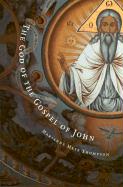 |
Stephen Smalley asserts that “The Spirit-Paraclete ... in John's Gospel is understood as personal, indeed, as a person.” Marianne Thompson, The God of the Gospel of John |
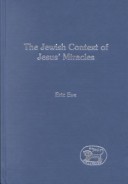 |
“The Messiah will come and the great age of salvation will dawn (for the pious).” Eric Eve, The Jewish context of Jesus' Miracles |
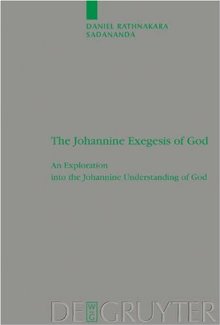 |
“The remembrance is to relive and re-enact the Christ event, to bring about new eschatological decision in time and space.” Daniel Rathnakara Sadananda, The Johannine Exegesis of God |
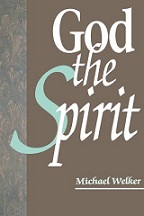 |
“The Spirit acts in such an international situation as the revealer of 'judgment' on the powers that rule the world.” Michael Welker, God the Spirit |
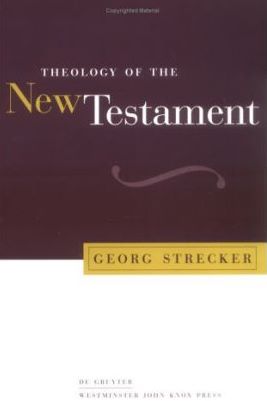 |
The Paraclete's “Appearance means that sin, righteousness, and judgment will be revealed.” Georg Strecker, Theology of the New Testament |
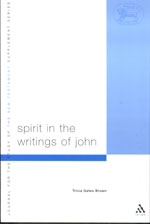 |
“While the Spirit-Paraclete is the true broker, the brokers they rely on are impostors.” T. G. Brown, Spirit in the writings of John |
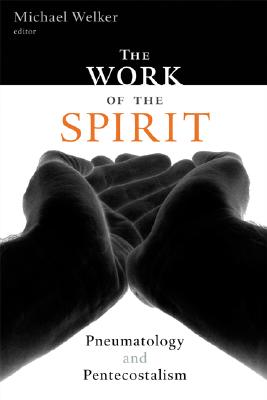 |
“The pneumatological activity ... of the Paraclete ... may most helpfully be considered in terms of the salvific working of the hidden Spirit.” Michael Welker, The work of the Spirit |
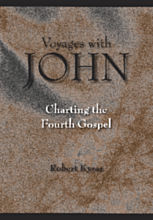 |
“The pneuma is the peculiar power by which the word becomes the words of eternal life.” Robert Kysar, Voyages with John |
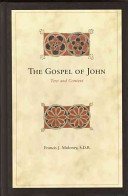 |
“The gift of peace, therefore, is intimately associated with the gift of the Spirit-Paraclete.” Francis J. Moloney, The Gospel of John |
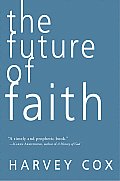 |
“This utopian hope, even when modestly expressed, links Jesus and the prophets to a much wider history of human longing.” Harvey Cox, The Future of Faith |
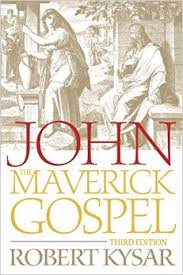 |
“Because of the presence of the Paraclete in the life of the believer, the blessings of the end-times—the eschaton—are already present.” Robert Kysar, John |
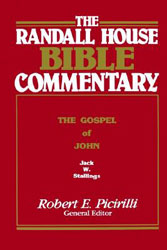 |
“They are going, by the Holy Spirit's power, to be part of the greatest miracle of all, bringing men to salvation.” R. Picirilli, The Randall House Bible Commentary |
 |
“The Kingdom of God stands as a comprehensive term for all that the messianic salvation included... is something to be sought here and now (Mt. 6:33) and to be received as children receive a gift (Mk. 10:15 = Lk. 18:16-17).” G. Ladd, A Theology of the New Testament |
Paraclete Papers
Part One: THE PARACLETE PAPERS: An Investigative Report on Christianity's Greatest Cover-UpPart Two: The Paraclete's Human Personality and the Theological Fallacy of Pentecost
Part Three: The Greatest Deception in Human History: Pentecost as Satan's Trojan Horse
Part Four: Unveiling the Church Born from the Prince's Millennia of Deception
Part Five: Apokalypsis: Paraclete's Fulfillment of Jesus' Eschatological promise from the Last Supper in the Age to Come


